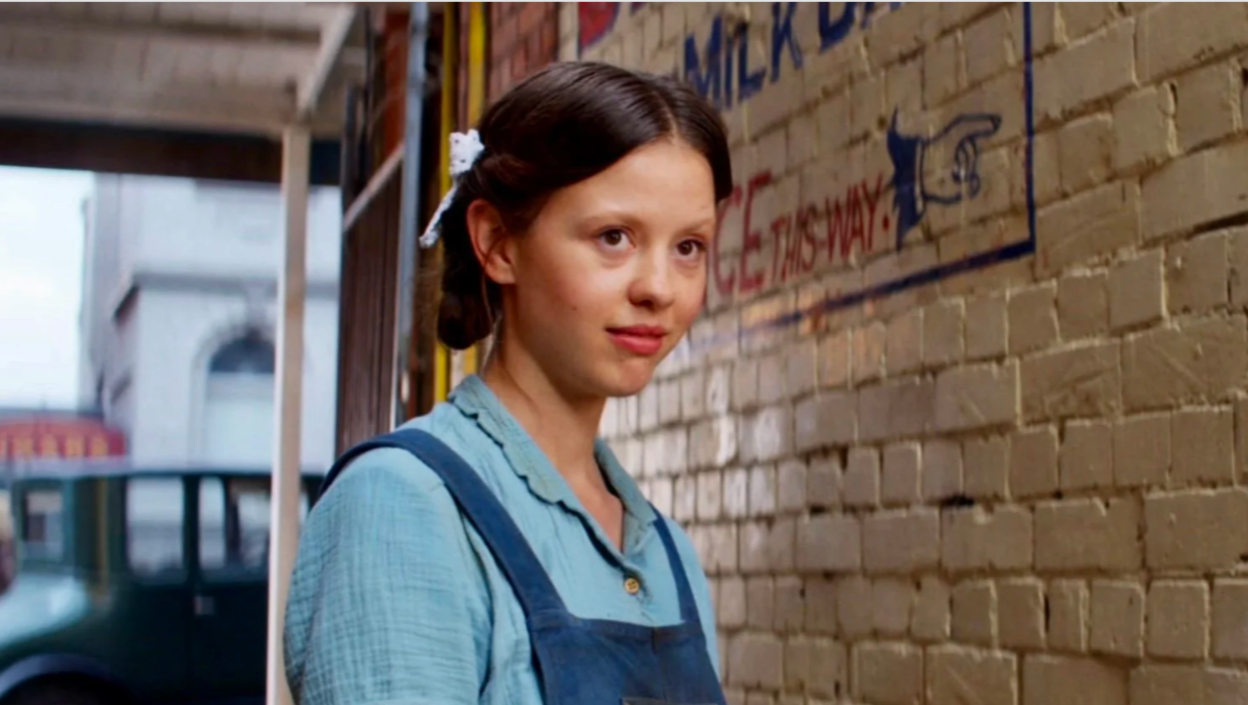“Cerdita” was the best Spanish short film at the Goya and Forqué 2018 awards, and now its film adaptation is one of the best Spanish films of 2022 (which speaks volumes in the year of “Alcarràs”, “Cinco lobitos”, ‘ Come bestas’ …). Carlota Pereda makes her film debut expanding this summer horror story about fatphobia in which young Sara is torn between saving her stalkers or protecting that enigmatic serial killer who seems to be the only one who understands her. Success also precedes it: it had its successful premiere at the Sundance International Festival and was applauded in San Sebastián and Sitges. And finally, This intense thriller, however commercial it may be written, arrives in all theaters on Friday, October 14th..
More than adapt, amplify
It’s surprising how all the very interesting strings the director pulls into her own script have already been lifted in the 10-minute short film (available online). At the beginning of the film, the same location is even used to recreate it almost to the millimeter. There is also the superb protagonist, Laura Galán, who at 36 shocks a bit like the classic teenager. In general, the age of young actors can push them a little away from their supposed high school characters. That yes, this license with casting is usually tolerated without problems with American cinema, and maybe it can even be part of those clichés that the film embraces so amusingly. Also, this one weakness of the film is covered by the biggest advantage of its adaptation: the attention to detail that makes it one of the great visual propositions of the year.
From the start, the pink color palette of the credits and the not-so-subtle visual metaphors demonstrate a playful aesthetic taste with the film’s rigid iconography. The adolescent and rural worlds are breathed in a very powerful staging: everything is so palpable on the cinema screen, so every day thanks to the precision in the make-up and lighting of the short shots, at home or outdoors, with those lights, sweat, clothes … In each shot we perceive the summer of the correct temporal context and the Spanish brand of the very powerful social context. Even the smart costumes and every little background detail tell the social classes and roles of the film (some with fans and tank tops, others with SUVs and expensive bags). In this way the age of the characters is covered with great intelligence in the costumes, decorations, accessories and many other details in the performances on how to speak, look, move, get indignant or even bite their hair.
Terribly Spanish
‘Cerdita’ is entertaining, but with great intelligence. Although she does not revolutionize the rules of terror, she strives to justify them and sides them with everything necessary for the plot. It doesn’t revolutionize the summer slasher, but it eliminates all the more typical American uselessness that tends to expel many viewers, and fills it with a Spanish context, a message of bullying and popcorn tension. Thus he fully inscribes himself in the genre but without submitting to it: there are no free deaths, each scene contributes or recovers, and all are narrated with style. It also enhances other stories of its kind as it is not too explanatory a film. Instead of characters explaining the film directly to the viewer, Pereda does it with looks and with the most intelligent direction of the shots, playing with blurring and framing rather than montage. Only in a short conversation is there a single, fairly justified concession to what could be a talkative anti-bullying film.

It may not fit with what is considered high terror, in the sense of being explicitly intellectual. But behind that American slasher, there is really a lot of depth in the Spanish context of summer holidays, as traditional as a city as it is current in social networks. Both styles mark the essence of “Cerdita”, although its script spans many more genres. All of them are so successful that they bring even more verisimilitude to a story that could easily be seen as fantasy, yet it couldn’t seem more real. It is a very choral film in which all the characters are recognizable by our society and have charm and meaning.. Indeed, more screen time is sorely missed by such wonderful companions as Carmen Machi’s hilarious duo and her young son; yes, thanks to the reduced duration of 90 minutes, the movie works like a shot. But no doubt the story and context were also for a series.
That picture of fabulous dynamics that are so real and Spanish between the characters differentiates it from the high school stereotype that could have become the adaptation and sets it up as a surprising social portrait that, had it been framed in the drama, would have already guaranteed more than one. Goya. Some of those dynamics that are at play between the cast are adolescence, different social classes and generations, the tradition of the country, friendships, summer, complexes, self-perception, forgiveness and grace (not only don’t give the bad guys what they deserve, but give them what they don’t deserve). That’s how complete “Pig” is and all with entertainment! Therefore, it can be used to sell internationally such as a powerful commercial product but also a close portrait of our society, past and present.
The beauty and the Beast
Among all these character dynamics, the one that becomes the engine of the story is that of Sara and The Unknown, as iconic and necessary as that of the ‘Halloween’ saga. Pereda plays with them so much in the script in such an organic, changeable, epic and profound way that she transforms Laura Galán and Richard Holmes into Spaniards Laurie and Michael Myers. Of course, this roleplay between victim and perpetrator would not have been possible without the vibrant chemistry between the actors. Galán hasn’t said a word in the short term, which is why he shines here with his moans, breaths, screams and other extreme but realistic manifestations of the terror of facing his gender, his body and his social status.
In that same line of superb non-verbal interpretation moves the almost unknown Richard Holmes (a Goya nomination should put an end to it). The actor of ‘Hasta el cielo’ rejuvenated the character of the short film in order to build that relationship with the protagonist with more meaning. The mere presence of him and his walking already fully enroll him in the Olympus of cinematic serial killers; but as if that were not enough, he also worked on the physical imposition of him with a surprising weight gain in the manner of Antonio de la Torre or Christian Bale.

And yes, after all that study of context and characters, the ending also satisfies what you expect from horror: it’s tremendous and completely unleashed. It is true that the body is asking you for something darker, that the script would have dared to consume sheer terror. But that would be another type of film, while this one has to bet on rationality with a touch of audacity. In this way it remains anchored to that veracity that marked the entire film without giving a final style deviation, and manages to make the viewer remember when leaving the room that ‘Cerdita’ wasn’t just a visceral experience, but it wants to confront you, make you uncomfortable and say something, like putting a mirror on society while you entertain.
Note: 9.
The best: The intense relationship and interpretation of the two protagonists.
Worse: It can distract the age of the actors a bit from that of their characters.
Source: E Cartelera
Elizabeth Cabrera is an author and journalist who writes for The Fashion Vibes. With a talent for staying up-to-date on the latest news and trends, Elizabeth is dedicated to delivering informative and engaging articles that keep readers informed on the latest developments.




.png)